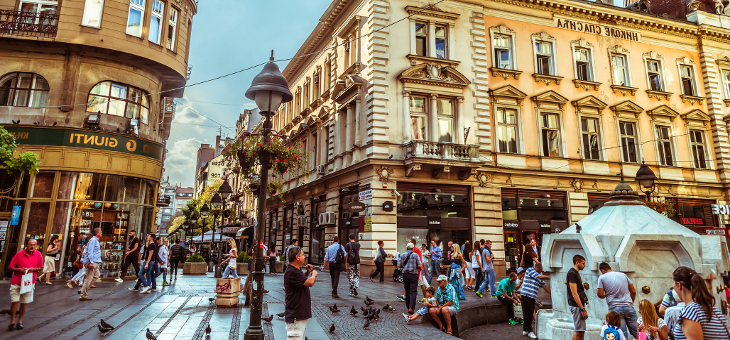Serbia: The government should overcome possible snap elections resulting from continued anti-government protests

Event
For the third consecutive month, Serbia has seen peaceful protests of tens of thousands of people against President Vucic’s rule go across tens of the country’s cities. Protests were triggered by the attack against the founder of a small leftist opposition party at the end of November, which followed other violent actions against critical media and politicians (including the controversial murder of a prominent moderate Kosovo Serb politician in January 2018). Demonstrators, which gather opposition groups, civil society, students and academics, are blaming responsibility on the ruling SNS party and criticising political violence, corruption and alleged authoritarianism under Mr Vucic’s government. Two dominant demands are the resignation of the Interior Minister and the organisation of early and fair elections.
Impact
Current demonstrations might seem to echo the wave of protests against corruption and bad governance that have come across the region, from Romania to Bulgaria and more recently in Albania. In Serbia, corruption is certainly a factor but not the dominant driver. Although they first appeared to be a limited threat to Mr Vucic’s rule and government, protesters have shown determination in continuing their actions and gathering an increasingly high number of unsatisfied people notably among the middle class. Therefore, they are not to be underestimated particularly as they highlight a wider-than-expected disillusionment among the population.
However, risks of political instability appear to be contained. The opposition is indeed weak, fragmented, poorly organised and its demands are multiple and lack clarity. Therefore, as the situation stands, Mr Vucic’s SNS party should win snap parliamentary elections, possibly next spring, thanks to a broad base of supporters and maintain the strong majority his SNS party has been enjoying since 2012. In that case, it is unclear whether protesters would consider elections fair and accept the outcome, thereby paving the way to pursuing anti-government actions. Still, at this stage, provided that Mr Vucic successfully deals with those popular pressures, political continuity is expected. The risk outlook is generally positive for Serbia which Credendo currently classifies in category 5/7 for MLT political risk. The economy is performing well and any new government is likely to continue on the way to the EU membership by further implementing necessary reforms. Accession is nevertheless a long distance away (2025 is the minimum target), not only because of the adverse climate for further enlargement as the EU institutions face rising nationalism and Eurosceptic forces, but also given the fact that Serbia has yet to recognise Kosovo’s independence. This remains a challenge after both countries failed to agree on a controversial and unpopular land swap last year as a way to facilitate Kosovo’s recognition. The situation is also not facilitated by Serbia’s intrinsic ambivalence given the close ties with its Russian Orthodox ally who also does not recognise Kosovo as an independent state. That’s why the population majority in favour of joining the EU will stay as long as Serbia’s future membership remains a realistic prospect.
Analyst: Raphaël Cecchi – r.cecchi@credendo.com